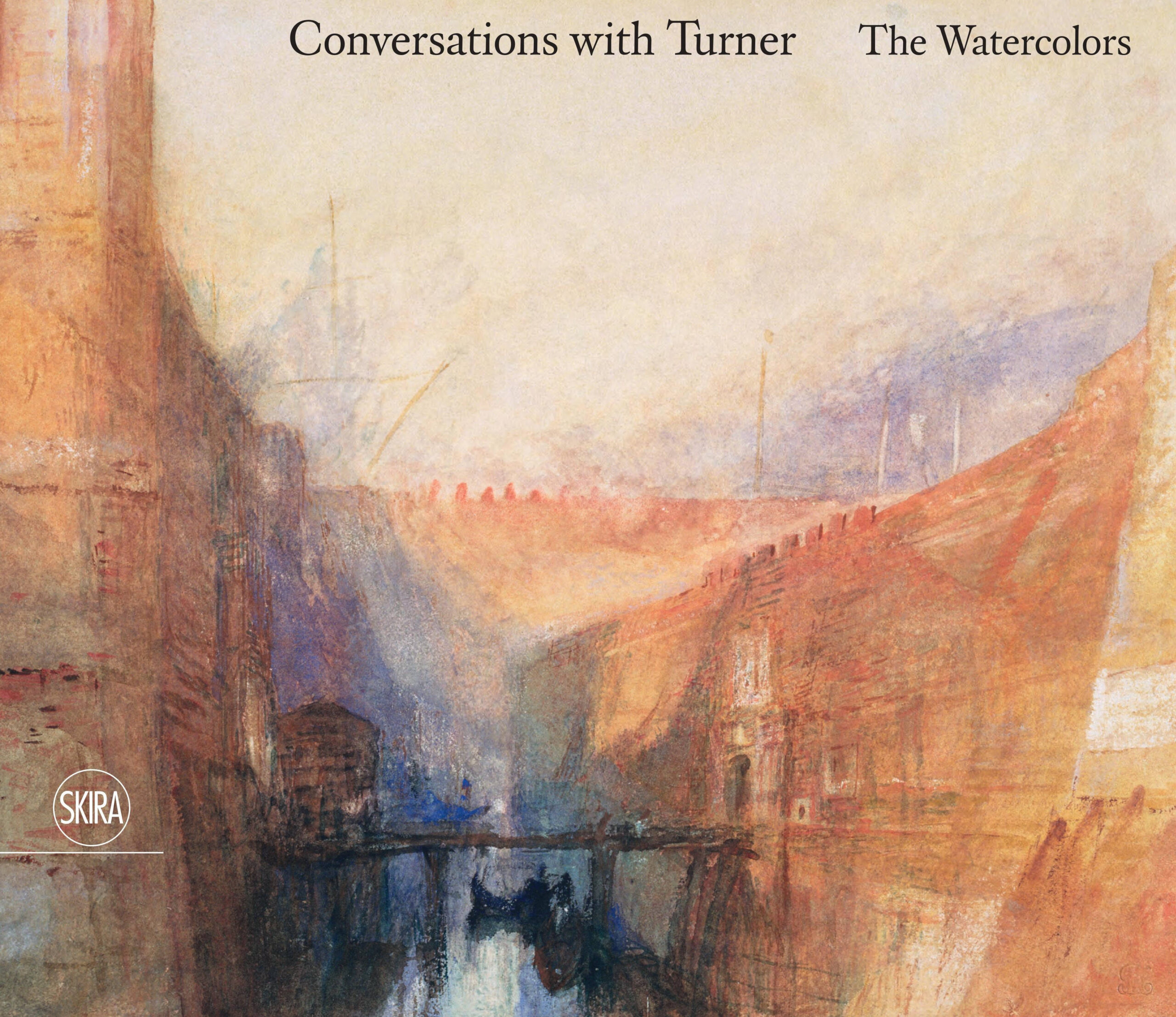
Mystic Seaport Museum is proud to announce it is accepting pre-sale orders for its new book, Conversations with Turner: The Watercolors, published jointly with Skira. Edited by Senior Vice President for Curatorial Affairs Nicholas Bell, the book accompanies the major exhibition at the Museum opening October 5.
Joseph Mallord William Turner (1775-1851) is widely considered the greatest artist in the history of Britain. Central to this claim is Turner’s mastery of watercolor, a medium he tackled in childhood and returned to throughout his life as he challenged, then surpassed all expectations of what could be achieved with the simple ingredients of paper, water, and pigment.
In this book 16 scholars, historians, and artists come together for a series of thematic conversations centered on this medium. Topics include the role watercolor played in Turner’s practice, its relationship to oil painting, what these works reveal about Britain in the grips of the Industrial Revolution, Turner’s relationship to the sea, and his impact today on contemporary art.
Contributors include Glenn Adamson, John Akomfrah CBE, Timothy Barringer, David Blayney Brown, Amy Concannon, Susan Grace Galassi, Ellen Harvey, Elizabeth Helsinger, Olivier Meslay, Mariana Marchesi, Alexander Nemerov, Katie Paterson, Victoria Pomery OBE, William S. Rodner, Sam Smiles, and Scott Wilcox.
This book illustrates more than 100 watercolors from the Turner Bequest at Tate, tracking the artist’s progress as he rivaled peers in the 1790s through to the 1840s, when Turner’s annual travels to Italy, Germany, and Switzerland fed an increasingly radical approach to color and technique. Many of these works were never intended to be seen by others, and were instead painted, in contemporary art critic John Ruskin’s words, “for his own pleasure.”



